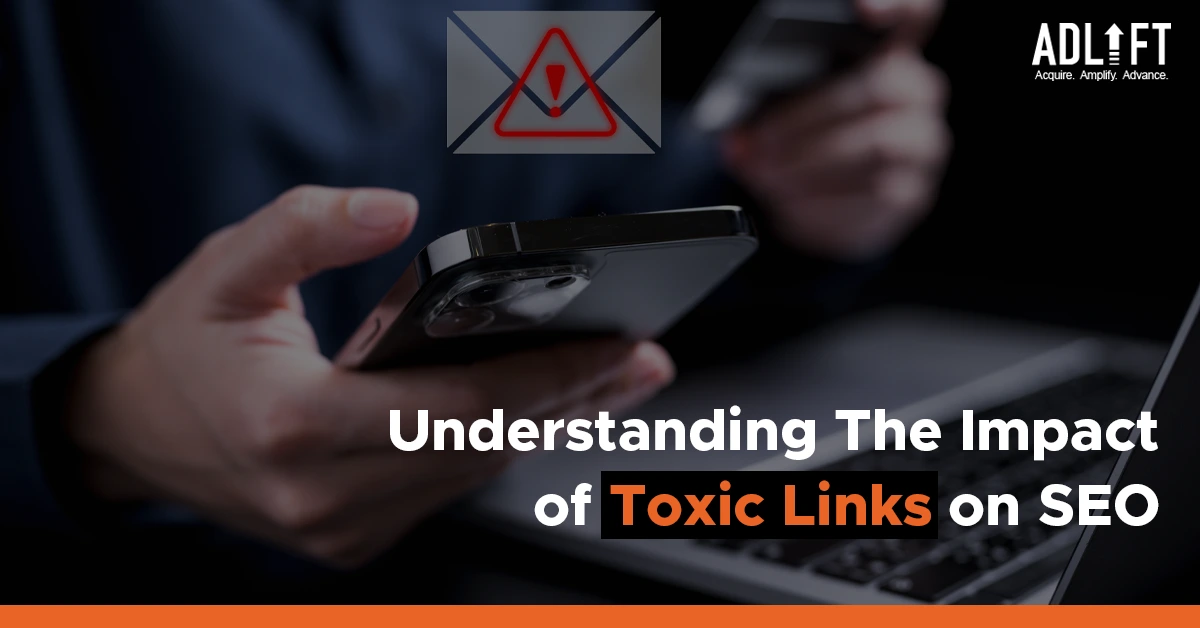Understanding The Impact of Toxic Links on SEO

What is a toxic backlink, and how does it affect a website’s search engine performance? In search engine optimization (SEO), backlinks are critical in determining a website’s visibility and ranking on search engine results pages (SERPs). Acquiring high-quality and relevant backlinks is essential for improving SEO. However, it is important to understand the detrimental effects of toxic links on a website’s credibility, authority, and organic search traffic. This article explores the concept of toxic backlinks, their potential consequences, and effective strategies to mitigate their impact.
What are Toxic backlinks?
When it comes to SEO, it’s natural to wonder about toxic backlinks and ask, “What is a toxic backlink?” Essentially, toxic backlinks refer to bad or spammy hyperlinks that direct users to a website from external sources. These links are deemed low-quality, irrelevant, or manipulative and can come from various sources, such as link farms, spammy directories, irrelevant websites, or even malicious origins. It’s important to note that these toxic links often contravene search engine guidelines, resulting in penalties or algorithmic filters that can significantly hinder a website’s SEO efforts.
Consequences of Toxic Backlinks
- Penalties and Manual Actions: Search engines like Google constantly refine their algorithms to provide users with the best search results. When search engines identify toxic backlinks pointing to a website, they may impose penalties or manual actions. These penalties can significantly drop organic visibility, lower rankings, or even removed from search results altogether.
- Loss of Trust and Reputation: Toxic backlinks can damage a website’s trustworthiness and reputation. When search engines detect a high volume of spammy backlinks, they may question the website’s credibility, potentially losing user trust. Moreover, visitors encountering spammy backlinks pointing to a website may associate it with low-quality or malicious content, further harming its reputation.
- Negative User Experience: Toxic backlinks often lead users to irrelevant, low-quality, or potentially harmful websites. When users encounter such backlinks, it diminishes their experience and erodes their trust in the website they were originally visiting. This can increase bounce rates, lower engagement metrics, and negatively impact conversion rates.
Ways To Find Toxic Backlinks
- Backlink Audit: To find toxic backlinks, one must do a comprehensive backlink audit using specialized tools. These tools can be Ahrefs, Moz, or SEMrush to identify toxic links pointing to your website. Look for backlinks from suspicious sources, irrelevant websites, and those with spammy anchor text or low domain authority.
- Manual Review: Analyze each potentially toxic link individually to determine its quality and relevance. To find toxic backlinks, evaluate the source website, content context, and overall link profile to decide whether to disavow or remove the link.
- Disavow and Removal: For toxic backlinks that cannot be removed manually, use the Google Disavow Tool to disassociate them from your website. This signals to search engines that you do not endorse these backlinks and should not be held responsible for their impact on your SEO.
- Reconsideration Requests: If your website has received a manual penalty due to toxic backlinks, it is essential to address the issue promptly. After disavowing or removing the toxic backlinks, submit a reconsideration request to the search engine explaining your actions to rectify the situation and regain their trust.
- Focus on High-Quality Link Building: To counteract the negative impact of toxic backlinks, invest in building high-quality, natural backlinks from authoritative and relevant sources. Focus on creating valuable content, fostering relationships with industry influencers, and promoting your website through ethical link-building practices.
Conclusion
Toxic backlinks can harm a website’s SEO efforts, leading to penalties, loss of reputation, and decreased organic visibility. Understanding the nature of toxic backlinks, conducting regular backlink audits, and implementing effective mitigation strategies are crucial for maintaining a healthy link profile. By actively managing and disavowing toxic backlinks while focusing on high-quality link building, web admins can safeguard their websites’ SEO and strive for long-term success in the online landscape.
Categories
Recent Posts
- Boost Your Website’s Visibility with These Must-have B2B SEO Tools January 13, 2025
- Master Your Digital Strategy: Learn the 7 Types of SEO That Lead to High Rankings January 13, 2025
- 2024: A Year to Remember at AdLift! January 7, 2025
- How to integrate your SEO and paid search strategies to maximize efficiency and reduce CAC January 6, 2025
- SEO in 2025: Adapting to a Changing Search Landscape By Prashant Puri, CEO & Co-Founder, AdLift January 3, 2025
- Understanding the Google December 2024 Spam Update: What You Need to Know December 31, 2024
- Beware of Ongoing Scams Involving Fake AdLift Representatives December 31, 2024
- Facebook vs Twitter: Which Platform Wins for Your Marketing Goals? December 30, 2024
- The Art of Naming Conventions in Marketing Campaigns: Best Practices for Clarity and Success December 26, 2024
- Is Your Content Strategy Working for You — or Against You? December 19, 2024
Get
in Touch
Contact AdLift for a 360-degree marketing plan

